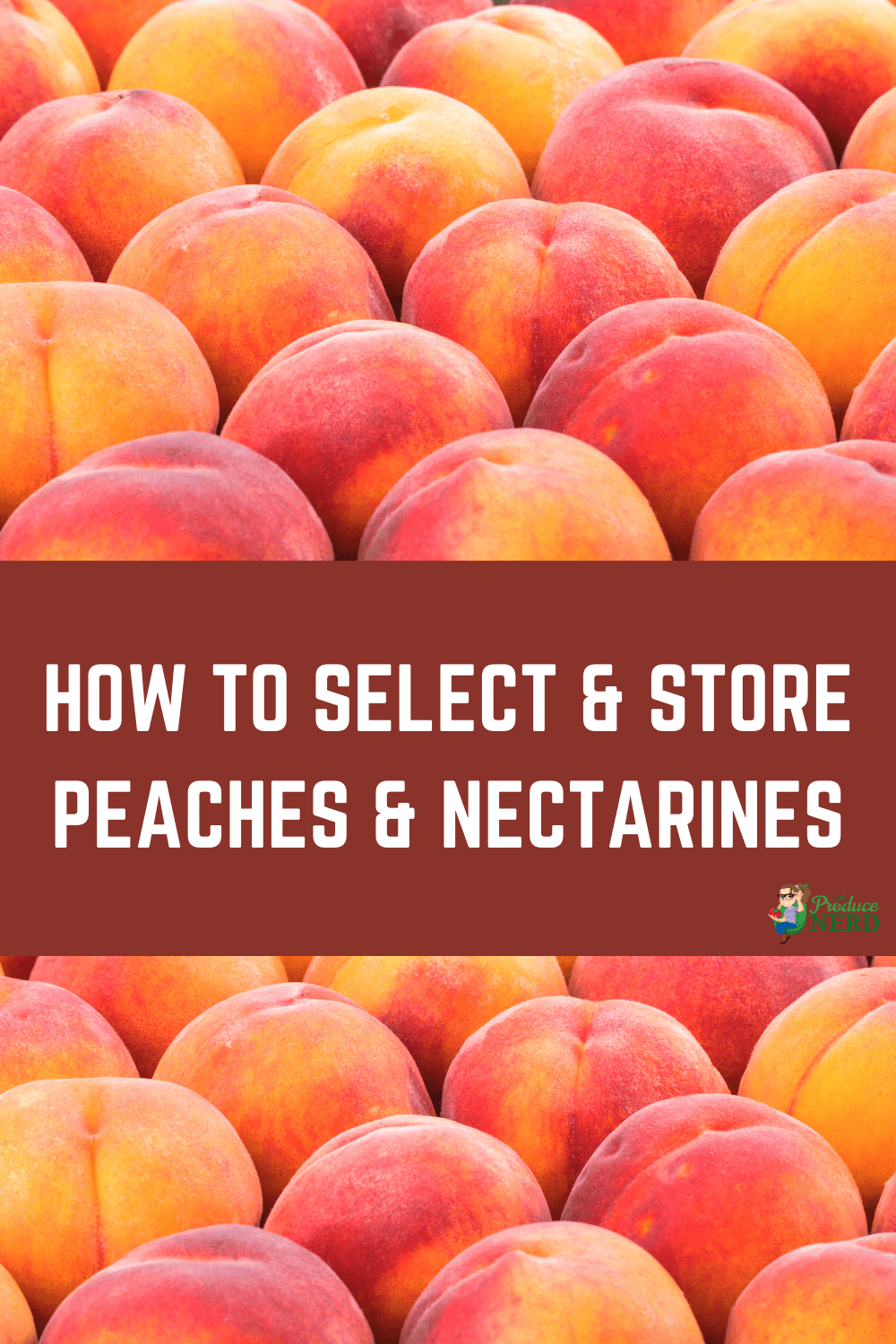Two of the most exciting summer fruits should be enjoyed to the fullest! This post is all about how to select and store peaches and nectarines to be able to enjoy them to their fullest.
(This post is an excerpt from The Produce Nerd’s Grocery Guide, with input provided by Chelsea McClarty Ketelsen from HMC Farms. You can learn more about the Grocery Guide, which covers this information for 55 different produce items, with input from 26 crop-specific companies HERE.)
How to pick the best quality peaches/nectarines?
- For yellow peaches/nectarines: Look for a piece of fruit that is full red/orange/yellow, with a yellow foreground.
- For white peaches/nectarines: Look for a piece of fruit that is light pink to maroon in color with a cream-colored background.
Yellow Peaches
White Peaches
- Because tree fruit is ripe when picked you can enjoy it at whichever level of softness you enjoy, it is ready to eat when it is slightly crunchy or when soft and juicy.
- The season in California runs from Early May – October. As with most fruits, the best time to buy tree fruit is when it is in peak season.
Common issues to avoid when selecting peaches/nectarines?
- A ripe piece of fruit should not have any green.
- Some common issues to avoid are selecting and buying overripe fruit, or even fruit that is at peak eating stage that you will not be able to eat in time. You can determine this based on the firmness of the fruit. Bruising and fingernail marks are also common issues found in softer fruit (this can happen at any point, including during harvesting, packing and stocking the grocery shelves).
What is the best way to store peaches/nectarines at home?
- They should be set on the counter, with the stem end (shoulders) on the counter to promote even softening of the fruit. Once the fruit has reached its desired softness, enjoy or place in the fridge until you are ready to consume. Whenever possible, try to avoid the fridge. Tree fruit tastes best at room temperature and if left in the fridge for too long, the interior texture will become less desirable.
- For white peaches and nectarines, there is no acid, so leaving them on the counter will change the texture, but they will not become sweeter as they soften.
Are there any common things that consumers should look for not mentioned above?
- Mealiness is a characteristic found in some peach varieties. Because the trait is highly undesirable, it has been bred out of many of the newer varieties of tree fruit. To avoid changing the internal texture, do not leave tree fruit in the refrigerator for long period of time (5+ days).
- Please keep in mind that in California alone there are over 100 different peach varieties, over 90 nectarine varieties, and over 70 plum and plumcot varieties grown throughout the summer season.
If you would like to learn more about peaches and nectarines, check out the following posts:
- What Causes Mealiness in Peaches?
- Peach Harvesting & Packing
- How is Your Produce “Washed”?
- The Wax on Your Produce
If you enjoyed this post, please share it!
